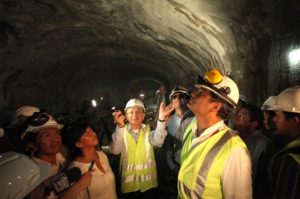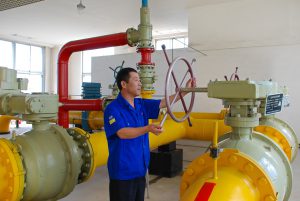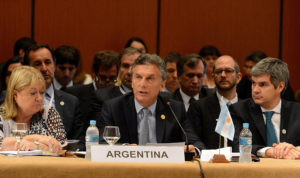China continues to invest heavily in extracting natural resources and infrastructure projects in Latin America. Chinese investment in natural resource extraction leapt from US$ 8.2 billion in 2015 to US$ 17.2 billion in 2016, according to Rebecca Ray, a researcher at Boston University’s Global Economic Governance Initiative (GEGI). “With the drop in commodity prices, Latin American countries are beginning to relax their environmental protection laws,” warns Julia Cuadros, head researcher on Chinese investments at the Peruvian non-governmental organisation CooperAcción.
“The tragedy of this easing is not only the socioeconomic costs, it is that it isn’t even necessary,” says Ray. “China will not leave Latin America because commodity prices are low. Most of the companies are state-run. Their job is to help the state. It is not like when American companies leave as prices fall because their sights are set on immediate profit. The governments in Latin America are working with an outdated vision. They do not know how to deal with this new type of actor,” explains GEGI’s Ray.
As a result, Latin American organisations and NGOs are trying to negotiate directly with Chinese banks and state run companies in order to make them comply with the basic socioeconomic standards of each country where they operate. Argentina, Peru and Ecuador, for example, are countries that have civil society organisations closely following the work of the Chinese and demanding greater transparency from China. “Extractivism will always be present because we have petroleum, ores, water, and foodstuffs. The debate is about using these resources responsibly. And this is a discussion that also includes multilateral organisations,” states Paula Garzón, director of the China-Latin America Sustainable Investment Initiative (CLASII).
Garzón cites two examples studied by her organisation in her home country of Ecuador: the Coca Codo Synclair hydroelectric plant and the Mirador mine. The hydroelectric plant, which was inaugurated last November, is the largest in Ecuador and will produce 1,500 megawatts (MW) of power, 30% of the country’s demand. The plant was constructed by Sinohydro with financing from the Export-Import Bank of China (Eximbank), without any study on the impact it would have on the country’s largest waterfall. The Mirador copper mine is being constructed without an environmental impact study and without the approval of the local community. The US$ 5.4 billion project, which is financed by five Chinese banks, is being run by the Tongling Nonferrous and China Railway Construction Corporation.
China has already invested US$ 24 billion in three Peruvian mines: Río Blanco, Toromocho and Las Bambas, according to CooperAcción. Of this, US$10 billion went to Las Bambas, the largest copper mine in the world. As soon as it began production in July last year, the mine was purchased by China Minmetals, Citic and Guoxin. The mine is located in one of the poorest areas of Peru, and the 325 trucks that traverse the dirt roadway each day raise large amounts of dust, affecting agriculture, the water, and the health of the population.
In Argentina, people are also worried about large Chinese infrastructure projects. “It is not clear what is being done or what will be done. There is no information. The population is told nothing. The people are not opposed. They just want to know what is going to happen. How they are going to mitigate the problems, and they want their rights to be respected,” says Cuadros, who is also in contact with the Chinese companies. María Marta Di Paola, coordinator for the economy and environmental policy at Argentina’s Environment and Natural Resources Foundation (Fundación Ambiente y Recursos Naturales, FARN), made contact with numerous Chinese civil entities when she was in Beijing to try to speak to representatives of the Chinese banks in person – although her attempts were unsuccessful.
“At least we discovered the cross-default,” jokes Paola, referring to the fact that the loan to build 10,000 kilometres of railway in northern Argentina (mainly to transport lithium) is linked to the construction of two hydroelectric plants in the far south of Argentina. The problem is that these hydroelectric plants, which are estimated to cost US$ 4.7 billion, could affect biodiversity in the area and the three glaciers in Patagonia (Upsala, Spegazzini, and Perito Moreno, the latter of which has been declared a UNESCO World Heritage Site). Another difficulty Argentina faces is that it is the only Latin American country without environmental legislation, comments Garzón.
The NGOs and civil society groups in different countries are beginning to come together to negotiate with Chinese banks and companies. One of these encounters took place in Washington DC at the headquarters of the Inter American Dialogue and was moderated by Michael Shifter, the president of that organisation. “We are trying to learn about China, but transparency is lacking and there are several Chinas within China. And the Latin American countries also need to decide what they want from the Chinese,” says Garzón. Two other meetings with other organisations are scheduled for this month to discuss China-Latin American relations.






